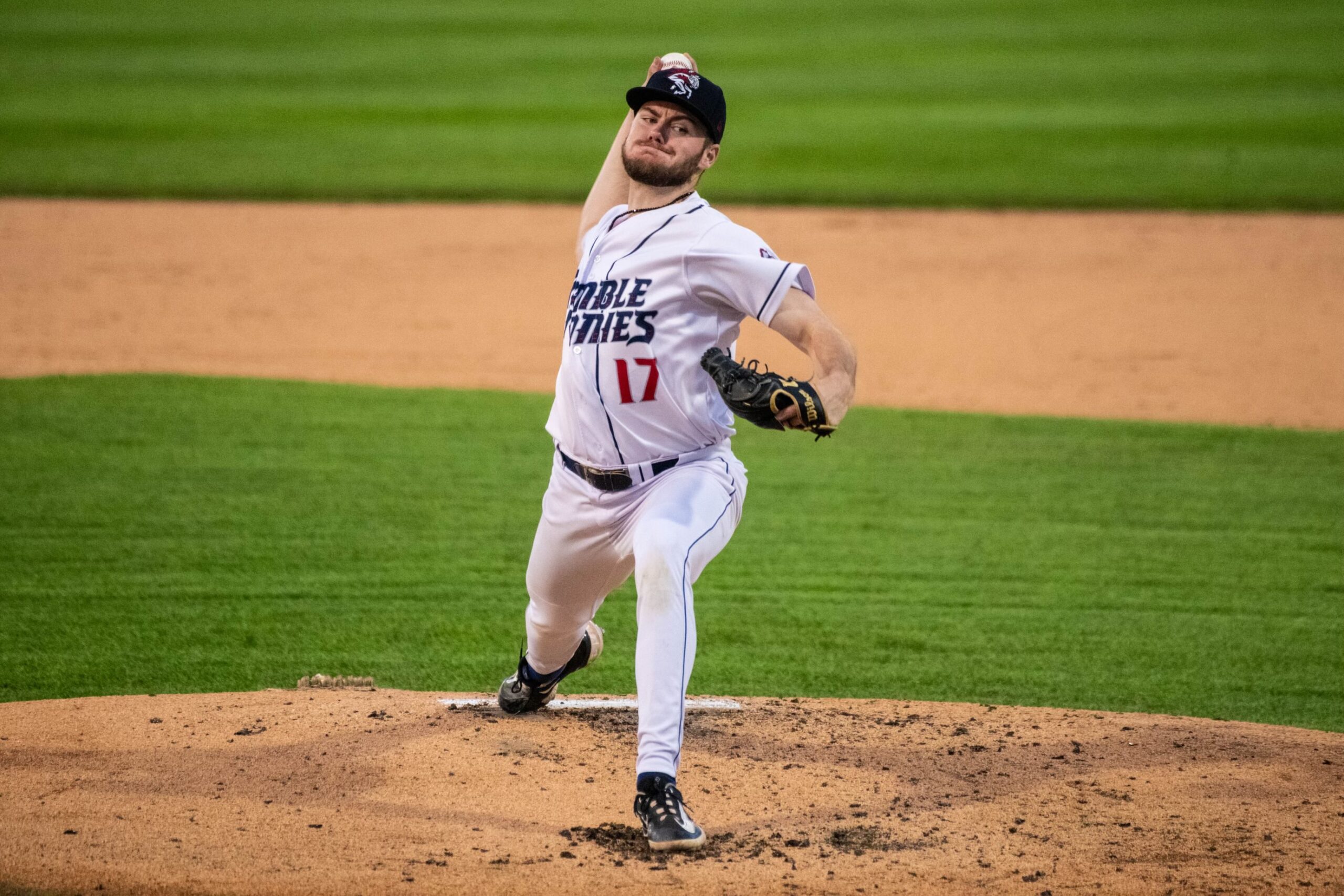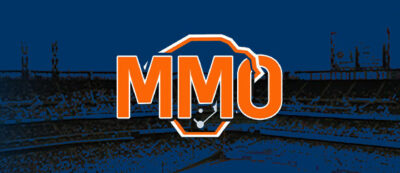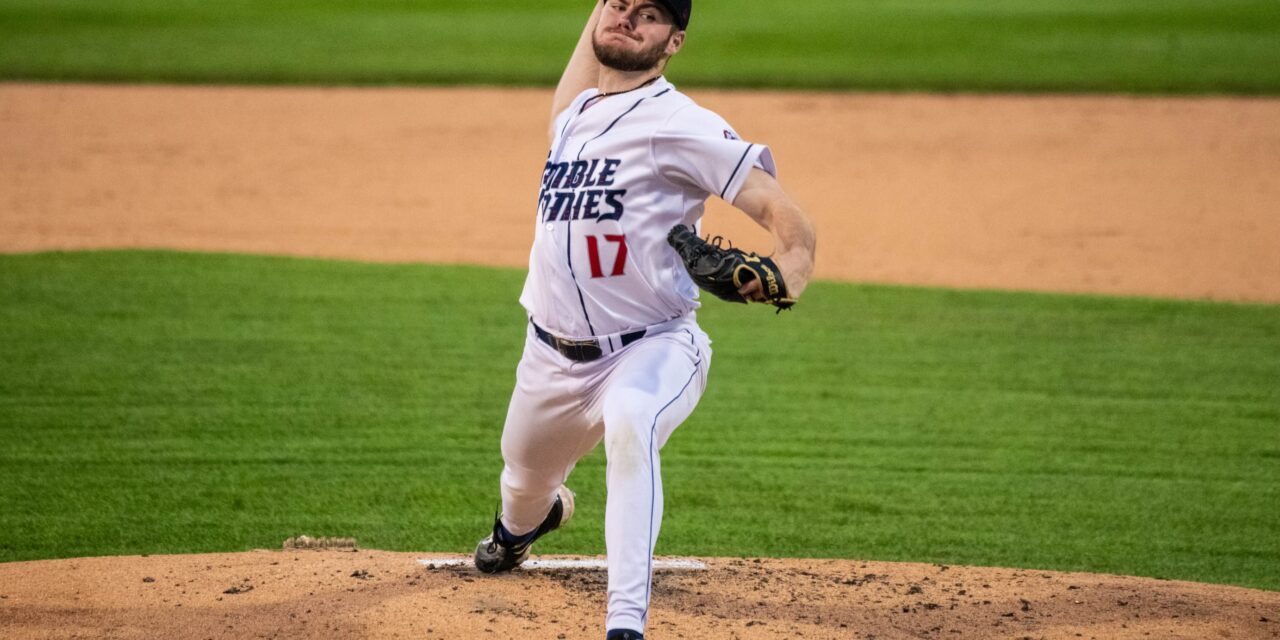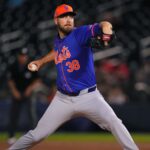The spring training countdown has officially hit 35 days for the Mets.
The club will play its first game in the Grapefruit League against the Cardinals on February 24, which will mark the beginning of the David Stearns’ era in Queens. Which by the way, should excite every single Mets fan.
In case anybody needs a reminder, Stearns has proven to be one of the best executives in all of the majors since his promotion to General Manager with the Brewers before the 2016 season. His Brewers made the postseason five times in seven seasons during his tenure, and again in 2023 after he shifted into an advisory role with the organization.
The Brewers’ success during Stearns’ tenure is directly linked to savvy moves he made as the GM. He traded Lewis Brinson, now playing in Japan, and other top prospects for Christian Yelich, who won the 2018 National League Most Valuable Player and has been a staple for the Brewers’ offense since.
Other brilliant adds from Stearns include acquiring Freddy Peralta for Adam Lind, signing Avisaíl García to a short-term deal, and bringing in Yasmani Grandal, who clubbed 26 homers and made the All-Star team in his one year in Milwaukee. You can read more about Stearns’ tenure with the Brewers here on Metsmerized.
Stearns’s success is undeniable. And it will carry over to Queens. But he has work to do with the system he was left. The Mets have multiple top prospects waiting in the upper levels, and with 2024 being an evaluation year, Stearns could call upon certain prospects to debut in Queens this season.
Here are my top five prospects that could make an impact on the 2024 roster.

Christian Scott. Photo by Bronson Harris of the Binghamton Rumble Ponies
5. Christian Scott
Christian Scott is the first and debatably most exciting starting pitcher on this list.
Scott made headlines last season in the minors for the Mets. After making a rehab start in St. Lucie to start the season, the righty soared through Brooklyn with a 2.28 ERA and then dominated again in Double-A with a 2.47 ERA in 62 innings.
Run prevention wasn’t the only aspect of the game Scott dominated. The former Gator struck out the competition, recording 11.2 strikeouts per nine behind his 93-96 mile per hour fastball and 82 miles per hour slider, which he credits to Max Scherzer after watching video of the former Met during the offseason.
The stuff is legit. Enough so that Stearns spoke about Scott and his stuff in an interview with Andy Martino.
“[i]t’s three very good pitches. It competes at a high level. It’s swing-and-miss stuff. All the things that you look for in potentially top-end starters, he has.”
The third pitch Stearns spoke of is Scott’s changeup. As of now, it’s primarily thrown to left-handers and “doesn’t do much but change speeds,” according to MLB.com.
One major reason that Scott is also listed here is his command. He walked only twelve batters in 83 1/3 innings between Single-A and Double-A last season, while also posting a combined 0.82 WHIP in both leagues.
Scott lands at five due to one final test left. The right-hander hasn’t pitched in Triple-A in his career and will turn 25 years old this June. The stuff to dominate is there, and if Scott can succeed in Syracuse this season, then the 88th-overall prospect (Baseball Prospectus) could be starting games in Queens in 2024.
4. Nate Lavender
Like Scott, Nate Lavender had a breakthrough year in the minors last season.
The left-hander recorded a 1.74 ERA in 10 1/3 innings in Double-A, and was then rewarded with a call-up to Syracuse. Lavender continued his success throughout the Triple-A season, recording a 3.27 ERA and 13.7 K/9 in 44 innings.
Lavender isn’t a flamethrower like Scott, who reached 98 miles per hour last season. The reliever sits at 91-92 miles per hour on his four-seam, but takes advantage of an abnormal arm slot to deceive batters. The fastball is his bread and butter, which he threw 66 percent of the time in 2023. Lavender pairs his fastball with a sweeping slider that sits at 80 mph and a changeup, which is his third pitch that also sits at 80 mph.
The Illinois native sits at No. 4 on this list due to his position. Successful teams have a rotating door of relievers, and the Mets will certainly call upon Lavender sometime next season to fill innings. It also doesn’t hurt that Lavender is a left-hander, which the Mets are short of in their bullpen as of now.
3. Mike Vasil
Mike Vasil enters spring with the best chance to crack the starting rotation.
The right-hander opened eyes in Double-A last season, where he recorded a 3.71 ERA and 0.84 WHIP in 10 starts. That success led to his promotion to Syracuse, where his season took a wrong turn.
The command that Vasil had in Double-A disappeared. He walked 38 batters in 73 innings and logged a 5.30 ERA in 16 starts. Vasil also didn’t deceive hitters at the Triple-A level. He allowed 70 hits in those 73 innings and opposing batters hit .250 against him.
Still, Vasil has impressive stuff and could turn heads this spring. His fastball sits at 93-95 mph and ranges from 2,300-2,500 revolutions per minute (2,100-2,400 rpm is the major league average). Vasil pairs that fastball with a high-80s cut-slider and low-80s curveball, along with a fourth-pitch changeup.
The arsenal and Triple-A experience is there. If the Mets have an injury to the rotation, or Vasil dominates in spring, don’t be surprised if the Mets No. 9 prospect (MLB.com) pushes himself into the rotation.
2. Luisangel Acuña
Luisangel Acuña could debut with the Mets in 2024 due to his athleticism. But lots of work needs to be done.
Acuña struggled with the Mets after being acquired for Scherzer. The righty slashed .243/.317/.304 with only five extra-base hits in 148 at-bats. That slashline was well below the .315/.377/.453 line he put up with Texas before the trade.
While he did struggle, there’s no reason to believe Acuña won’t bounce back in his second season with the Mets. He still recorded an on-base percentage above .300 in Binghampton, which is notable due to his speed and knack for stealing bases. Acuña also stayed somewhat composed at the plate and only struck out 30 times in 37 games.
The only missing piece from Acuña’s game right now is his power. He recorded 25 doubles and seven homers with Texas in 2023 and has the potential to be a 15-20 homer guy in the majors. However, after the trade, Acuña couldn’t lift consistently and recorded a 34.8% groundball rate in Binghamton.
If Acuña can lift more consistently, his athleticism will carry him to Queens. His ability to play multiple positions is valuable, along with his game-changing speed which could result in a call-up alone.
1. Drew Gilbert
Out of every Mets prospect, Drew Gilbert has the easiest path to the majors.
The lefty was acquired last season for Justin Verlander and displayed why he was a first-round pick. He slashed .325/.423/.561 with six homers in Double-A with the Mets, while playing plus defense in center field.
Gilbert also displayed clutch traits while playing in Binghamton. During the Eastern League Championship Series against the Eerie Seawolves, Gilbert clubbed a game-tying, three-run homer in the sixth inning of Game 1.
This success, and traits that Gilbert has displayed, garnered attention from multiple top outlets. First, Stearns spoke about the Mets’ top prospect during the offseason and praised his abilities.
“This is what you want to see from a prospect, from a first-round pick, you want to see them get incrementally better each year.” All of a sudden, you look up and they’re in Triple-A and the high levels of our minor leagues, and they’re knocking on the major-league doorstep.”
Stearns wasn’t the only one to show respect toward Gilbert. Baseball Prospectus released their top 101 prospects heading into 2024 and listed Gilbert as No. 29 overall. MLB.com also has Gilbert listed high and sits him at No. 52.
With all the praise and talent, we could see Gilbert in Queens shortly. He is currently blocked by Brandon Nimmo, Starling Marte, and Harrison Bader, but all three players have dealt with injury, and could open the door for Gilbert if health intervenes.















